Omeo: A Gem of a place.

- the Great alpine Road at Conner’s Lookout
Omeo, with its grand goldrush-inspired buildings, is the idyllic mining town setting for the recent Australian film
Patrick Hughes’ Red Hill. Not surprising. It’s a gem of a place and much of Omeo’s quaint 19th century hilly streetscape is an architectural timepiece, a legacy from when the town was the centre of Australia’s largest alluvial gold diggings. Its halcyon boom days, which saw the population swell to 9400 in the year 1900, were over by the early 1920s. Luckily, those pioneering cattlemen kept a flicker of life in the town until tourism and the start of the timber industry in the 1960s turned around Omeo’s decline.
I strike up a conversation with another town character, Jim U’Ren, the volunteer manning the Country Colour and Visitor Information Centre, who reckons Omeo isn’t quite sub-Alpine’’ at 600 metres above sea level.
It’s a very special country up here in the mountains,’’ he says. “We do a lot of bush walking and birdwatching.’’Jim reckons I must visit the tourism jewel of Omeo – its Justice Precinct right across the road where the majestic red brick Court House, built in 1893 is an architectural masterpiece. It is one of five buildings, which makes up the most original and complete law and order precinct in Australia. Alongside is the original log gaol built in 1859, which held its last prisoner in 1983 and the old Police House and horse stables (1883) as well as a large waterwheel set in the landscaped park.
another magnificent iconic building is Omeo’s Art Deco Golden Age Mote, rebuilt immediately following the disastrous 1939 Black Friday fire. From its wide irst floor timber balcony we regard the whole quaint streetscape. Breakfast beckons across the road at the Omeo Highplains Bakery and Café where an akubra hangs nonchalantly on a hook on the wall. Could it have belonged to one of the cattlemen, so much a part of the culture here, but banned from moving their cattle into the delicate Alpine region. One ponders what will become of Omeo.
Interestingly, it is probably the Great Alpine Road which will ensure Omeo remains on the tourist’s map. The last 10 kilometres of the road were sealed only in 1998 to make it the highest all-weather accessible road in Australia. Omeo is strategically placed on the route to the popular snow villages of Mt Hotham, Dinner Plain and Falls Creek. It has many interpretive signs and picturesque discovery walks for tourists’ enjoyment while Omeo’s new Oriental Claims Historic Area is a little up the road towards Cobunga where Jim lives.
The air one breathes up here is crisp and clear with its distinct scent of pines wafting from the undulating pine-clad hills. It’s the same undulating charm of Omeo’s streetscape. And so we turn around and take the Great Alpine Road on an exhilarating drive to the Gippsland Lakes region and Bairnsdale, the other end of this wonderful route. (even though we got stuck behind a convoy of horse floats). The velvety landscape is simply beautiful and changes from picturesque mountain scenery to postcard perfect gum country, grand homesteads and green, pastureland dotted with post and rail cattle yards.
We stop at the Albion Hotel in Swifts Creek for lunch because we have heard that husband and wife chefs Shannon and Tennilee Mee have won the best regional pub state winners in the I Love Food Awards 2009 following their take-over and renovation. We tuck into their gourmet venison and red wine sausages with its light, creamy mash, accompanied by a local wine, Lightfoot & Sons Pinot Noir 2009.
Swift’s Creek boasts a daily baker, regional arts centre and a bookshop opposite the pub and we dally somewhat because Shannon reckons it’s a shame so many people drive straight through on their way to Omeo, 25 kilometres away. At Tambo Crossing, we begin to criss-cross the upper reaches of the Tambo River and it is so exciting about an hour later when we reach Swan Reach and take the Metung Road when we realise with the full, flowing Tambo alongside, that we have followed the length of the river from the mountains to Lake King in the Gippsland Lakes.
Metung is the jewel fishing village in arguably the biggest and most beautiful inland lake system in Australia. As we swing around a bend on Metung Road, the little township lies below us like a wonderful watery playground edged with a clutter of yachts and boats of all kinds on Lake King “Oh, what a magic place!’’, I cry in delight. We board MV Corque winery/lunch cruise outside the historic Metung Hotel Bistro to experience a mere taste of the 400sqkm lakes and estuarine environment.
Skipper Geoff Mahlook takes us on a pleasurable 90-minute journey to Lakes Entrance. We are a captive audience and while we soak up the stunning waters and prolific birdlife, (sea eagles are protected here) he plies us with tastings of his Wyanga Park wines until we merrily alight for lunch at the winery itself. We glimpse the extraordinary setting of Lakes Entrance when the cruiser edges towards the estuary mouth and we could see the ocean through the break in the pencil thin peninsula.
And so, to end our extraordinary day, we return by road to Lakes Entrance and stroll along the Esplanade, past the carved
bollards depicting World War II heroes and past the moored fishing trawlers to Miriam’s restaurant where we eat a platter of fresh seafood. Fittingly, we weary souls bed down at Chestnut Hill Country Retreat on a hillside overlooking the Tambo.
See inspiredbygippsland.com.au or www.omeoregion.co.au. Pick up a copy of 40 Inspiring Walks in Gippsland or telephone Omeo Region Visitor Information Centre 03 51591679.
- The great alpine Road
- the Great alpine Road at Conner’s Lookout
- Omeo streetscape
- Drizabone hangs in the Omeo Highplains Bakery & Café.
- The tambo river
- The Jetty at Metung
- Fishingtrawlers at lake entrance
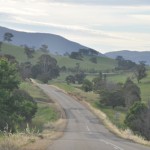
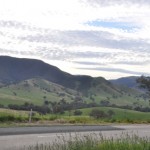
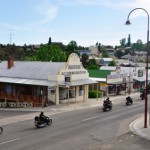
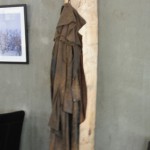
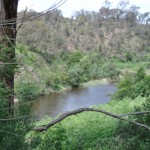
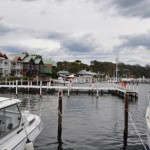
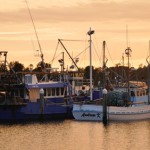
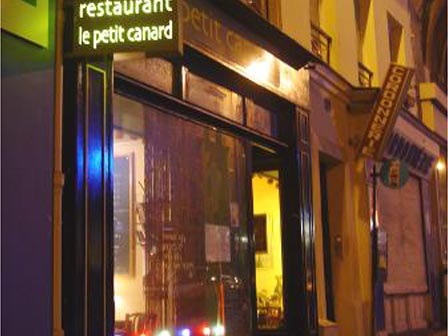 By SERENA WILLIAMS:
By SERENA WILLIAMS: